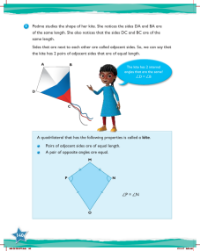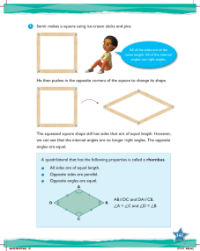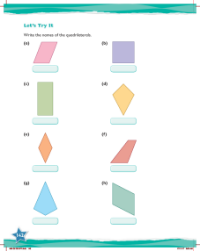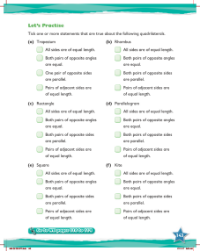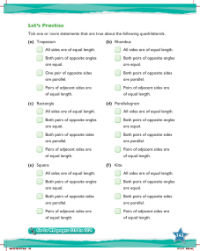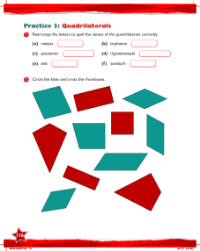Max Maths, Year 6, Learn together, Quadrilaterals (1)
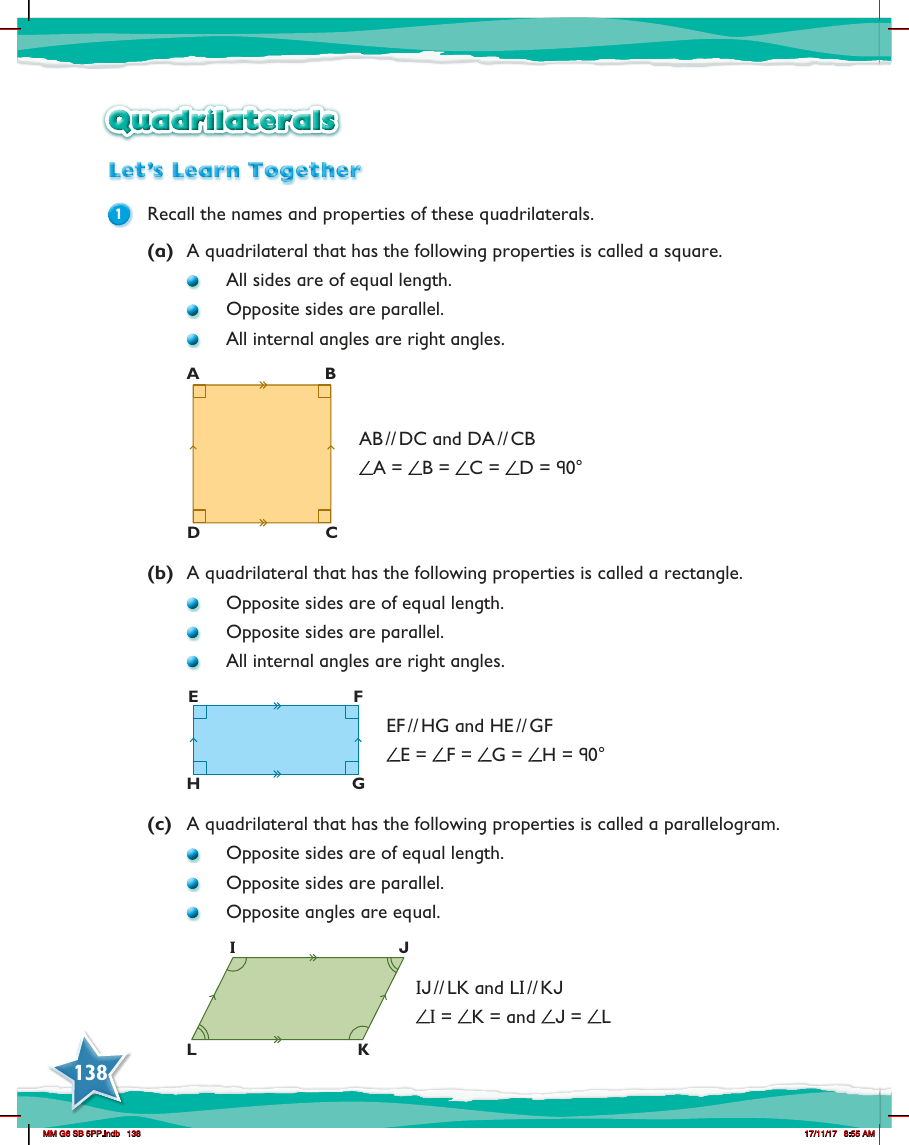
Maths Resource Description
In the 'Max Maths, Year 6, Learn Together' series, the focus of this particular lesson is on quadrilaterals. The lesson starts with a recap of the names and properties of different types of quadrilaterals. First up is the square, a quadrilateral characterised by four sides of equal length, with opposite sides that are parallel to each other. Additionally, all internal angles in a square are right angles, each measuring 90 degrees, making it a regular quadrilateral. A diagram accompanies this description, illustrating a square with sides labelled AB, BC, CD, and DA, and angles at each corner marked as 90 degrees, demonstrating the parallel sides and equal angles.
Next, the lesson moves on to the rectangle, another type of quadrilateral. Similar to the square, a rectangle has opposite sides that are equal in length and parallel. However, the sides adjacent to each other are not necessarily of the same length. The defining feature of a rectangle is that all internal angles are right angles, each one being 90 degrees. The accompanying diagram shows a rectangle with sides EF, FG, GH, and HE, with parallel opposite sides and angles marked as 90 degrees at each vertex. The third quadrilateral discussed is the parallelogram, which has opposite sides that are both equal in length and parallel. Unlike the rectangle and square, the parallelogram's internal angles are not all right angles; instead, opposite angles are equal. The diagram for the parallelogram labels the sides as IJ, JK, KL, and LI, with the opposite sides indicated as parallel and opposite angles marked as equal.

